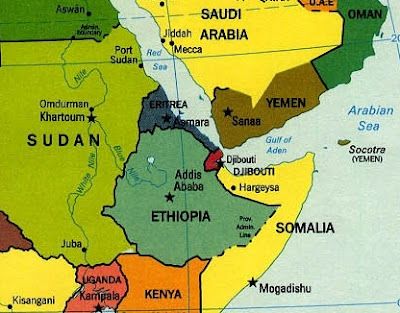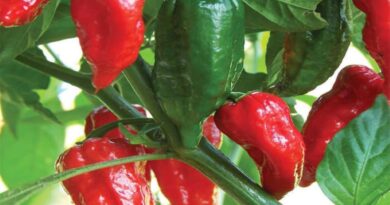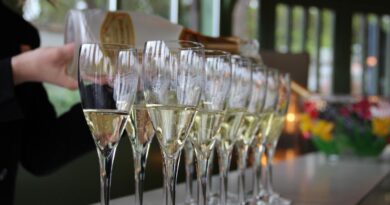Where does Coffee originate from?
An estimated 2.5 billion cups of coffee are relished by coffeeholic a day across the world. Surprisingly Great! Coffee is the second-most traded commodity in the world, behind only petroleum. Now it’s a mainstay of the modern diet. Certainly, it comes to our mind that where does Coffee originate from?
No one knows exactly how or when coffee was discovered, though there are many legends about its origin. Let’s today explore this important commodity, which is believed sparked a social revolution in many countries.
The History: where does Coffee originate from?
The Story of the birth of coffee is unclear and unverified. But it seems to narrow down to two stories on its origin. One takes us to Ethiopia and the other takes us to Yemen.
An Ethiopian Legend
Coffee is grown worldwide, but it started its journey centuries back from the ancient coffee forests in the Kaffa region in Ethiopia. The legend says that Kaldi, a goat herder first discovered the potential of these great beans around 850 CE. He noticed that after eating the berries from a certain tree, his goats became so energetic that they did not want to sleep at night. Kaldi then decided to try some, and when he did, he also experienced the same. His exhilaration prompted him to bring the berries to the monk of the local monastery. The monk at first tossed the berries in the fire fearing they were the “Devil’s Work”. However, as the aroma of the roasted bean filled the monastery, the monk immediately recovered it from the fire, crushed it, and poured water onto it. Upon drinking the mixture, he found that it kept him alert through the long hours of evening prayer. The monk then shared his discovery with the other monks at the monastery, and thus began the story of the energizing berries in Ethiopia.
So now, if someday someone calls me an “Old Goat”, I won’t mind, but rather will smile, sip another cup of coffee, and feel energetic like Goat.
Soon the word spread to the east and coffee reached the Arabian Peninsula and began its journey across the World.
Yemen’s Coffee Origin Myth
Yemen also has two coffee origin myths.
The first legend from Yemen claims that the Yemenite Sufi mystic Ghothul Akbar Nooruddin Abu al-Hasan al-Shadhili while traveling through Ethiopia, presumably on spiritual matters had seen some very energetic birds that had been eating the fruit of the Bunn plant (known elsewhere as the coffee plant). Weary from his journey, he decided to eat these berries for himself and he felt a very energetic state in him as well.
The second coffee origin myth from Yemen is centered around Sheikh Omar, a doctor-priest and a follower of Sheik Aboul Hasan Schadheli from Mocha, Yemen, who was exiled by his communities to a cave in the desert. After some time of exile and on the verge of starvation, Omar ate the red berries from a nearby bush. But he found them to be too bitter to eat raw. Keen on making the most out of his meager meal, Omar roasted the bean, hoping to remove its bitterness. This basic “roasting” technique hardened the beans, making them unsuitable for chewing. He then boiled those roasted berries with water to soften them. He found the pleasant aroma of the increasingly brown liquid and decided to drink this decoction rather than eat the hard beans. He found the drink very energetic and revitalizing which sustained him for days.
The story of Omar’s invigorating drink quickly reached his hometown of Mocha. His exile was lifted and he returned home with the berries he had discovered. After returning, he shared coffee beans and the drink of coffee with others, who found it magical in curing many ailments.
Now both of these accounts make for good stories, but we can’t know for sure if that’s how the first cup of Joe came to be. But it seems from the historical evidence that the crown for the first cup of coffee goes to both Ethiopia and Yemen. The plant itself is native to Ethiopia, while the first real evidence we have of its roasting and brewing as we consume coffee nowadays comes from Yemen.

Entered in Arabian Peninsula
Sufi Imam Muhammad Ibn Said Al Dhabhani is known to have imported beans from Ethiopia to Yemen at Mocha Port in the 15th Century. Sufis then in Yemen were using the coffee as an aid to concentration and to keep themselves alert during their night-time devotions in Sufi Dhikr ceremonies. The story goes that in 1450, Sufi monks in Yemen brewed some of the first cups of coffee. From there it reached Egypt, Syria, Persia, Turkey, and Italy. A translation of Al-Jaziri’s manuscript traces the spread of coffee from Arabia Felix (present-day Yemen) northward to Mecca and Medina, and then to the larger cities of Cairo, Damascus, Baghdad, and Constantinople.
Coffee was known as the “wine of Araby”. Since Mecca was a holy place that thousands of pilgrims were visiting each year, they helped a lot to spread the knowledge of this drink throughout the world. Initially, Yemen maintained an exclusive monopoly on the drink for centuries. The port city on the Red Sea, Mocha, also spelled Mokha or Mukha was the prime hub of the coffee trade. To maintain their monopoly on its control, coffee merchants in Mocha prohibited the distribution of live seeds or seedlings of the coffee plant to restrict coffee production to Yemen and to restrict coffee distribution to Mocha until late in the seventeenth century.
Associated with Sufism, myriad coffee houses grew up in Cairo around the religious University of the Azhar, the renowned and most prestigious university for Islamic Studies. By 1554, such coffee houses also opened in Syria, especially in the cosmopolitan city of Aleppo, and then in the capital city of the Ottoman Empire (Turkey), Istanbul.
Leonhard Rauwolf, a German physician, botanist, and traveler who sailed in Aleppo in 1573, mentioned coffee in one of his books written in Germany, “Aigentliche Beschreibung der Raiß inn die Morgenländerin”, This book was published on 1580. Its English translation, “Dr. Leonhart Rauwolf’s Travels into the Eastern Countries” was published in 1693. Rauwolff was among the first Europeans to describe the drinking of coffee,
“A very good drink they call Chaube that is almost as black as ink and very good in illness, especially of the stomach. This they drink in the morning early in the open places before everybody, without any fear or regard, out of China cups, as hot as they can, sipping it a little at a time.”
Through this, we can make it that Coffee was not known to Europe then. The description of other European travelers around that time was also in the same line.
The effort to BAN Coffee: Obstacles in Smooth Sailing
But the journey of Coffee globally was not so smooth. It was considered that coffee is ‘sinful’, like alcohol, and therefore it also has a long history of prohibition.
In 1511, the conservative and orthodox imams at a theological Court in Mecca banned drinking Coffee. Khair Beg, then Governor of Mecca, was the leader of this movement against coffee. He was concerned that coffee may bring people together foster opposition to his rule and discuss his failings. The court decreed coffee sinful (haraam). Anyone caught drinking or selling coffee at that time was beaten. However, the controversy over whether this drink was intoxicating or not raged on for the next 13 years. Ultimately in 1524, Ottoman Turkish Sultan Suleiman I, with the empire’s chief judicial officer Grand Mufti Mehmet Ebussuud el-İmadi rejected the judgment and issued a fatwa allowing the coffee to be drunk again. Sultan commanded the execution of Beg and further proclaimed coffee to be sacred.
Once again in 1532 in Cairo, Coffee and the places where it was drunk were also banned due to a series of anti-coffee sermons by some religious leaders. To that effect, anti-coffee rioters attacked coffee houses. But this made many coffee lovers angry and they joined on the street in support of the pro-coffee movement. A combat between the pro-coffee mob and the anti-coffee mob started in the city. The authorities had to restore order and ultimately coffee became a legal drink there.
No one Can Stop Me: I am Coffee
None of the bans and conflicts were sustained ever because religious leaders themselves were divided on the issue. Within a few decades, coffee found its root established almost in every Islamic world, from North Africa to the Mughal Empire in India. Within a century, just from a ceremonial drink of Sufi mystics, coffee became the social fabric of the Muslim nations.
Whilst the coffee tree has its roots in Ethiopia, the coffee drink originated in Yemen. For the first few decades of the sixteenth century, Yemen was doing monopoly in the Coffee trade, and the vast majority of coffee was cultivated in Ethiopia. In 1544, however, the Imam of Yemen insisted that coffee be cultivated in place of qat aka khat, a mildly intoxicating herb grown locally that contains alkaloid cathinone as a stimulant. After that cultivation of qat was replaced by coffee largely, mainly in the highlands of Yemen. Then Yemen prospered in the coffee trade around the world. By the early 1700s, the country’s main source of income was coffee exports only. Yemen was the only supplier to the world. Until the middle of the sixteenth century, coffee was cultivated, traded, and consumed almost exclusively in the Islamic world; then it started its journey from the Islamic world to Westernized Europe.
How Coffee entered Europe?
Coffee entered Europe via two routes. The first route of travel was through the massive, spread out of the Ottoman Empire that allowed transportation of goods including coffee to make their way well into Europe, and the second route of travel was from the port of Mocha in Yemen, where the East India Trading Co. used to buy coffee for trade in mainland Europe.

The Battle of Mohács was fought on 29 August 1526 near Mohács, Kingdom of Hungary between the allied forces of the Kingdom and Ottoman Empires (Turkey). The Ottoman victory led to the entry of Coffee into Hungary, the first time in Europe. In 1529, Ottoman made an unsuccessful attempt to capture Vienna at the Siege of Vienna. Whilst they failed to enter Austria, coffee became a part of Vienna’s identity with the Siege of Vienna incident.
The first coffeehouse in Austria was opened in Vienna in 1683 by using supplies from the spoils obtained after defeating the Ottoman in the Battle of Vienna. Jerzy Franciszek Kulczycki (Georg Franz Kolschitzky), a Polish military officer received the containers full of coffee beans and opened this coffee house. He popularized the custom of adding sugar and milk to coffee. Melange is the typical Viennese coffee, which comes mixed with hot foamed milk, and is usually served with a glass of water. In 1565, the year of the Siege of Malta, coffee was introduced on the island of Malta through Turkish Slavery. This year Ottoman invaded Malta and was miserably defeated by the Knights Hospitaller.
Through a treatise published in Rome in 1671, called Della Virtù del Caffè, Maltese scholar Domenico Magri mentioned, “This priest tells us that in his time, the ‘Turkish’ slaves in the Valletta prisons were renowned for the good coffee they brewed. These not only drank coffee but also sold it, to earn some modest cash. Even the Knights used to go to the slaves’ prisons, located as they were near where today stands the Lower Barrakka Garden, to buy coffee beans, roasted and ground, to consume at home. Other Maltese families belonging to the upper class did the same.” Also, the German traveler Gustav Sommerfeldt in 1663 wrote, “the ability and industriousness with which the Turkish prisoners earn some money, especially by preparing coffee, a powder resembling snuff tobacco, with water and sugar.”
Slowly coffee became a popular drink in Malta, especially in taverns in the maritime town of Birgu, the site of major battles between the Knights and the Ottoman Empire during the Great Siege of Malta in 1565.
Coffee Baptized in Italy
In Italy, coffee first arrived in 1580 when a Venetian physician and botanist Prospero Alpini imported coffee into the Republic of Venice from Egypt. When coffee first arrived in Italy, some representatives of the Catholic Church opposed coffee at its first introduction in Italy, believing it to be the “Devil’s drink”, as it was regarded as being sinful due to its association with the Islamic religion through the Ottoman Empire.
In 1600, Pope Clement VIII was asked to publicly denounce coffee to discourage its consumption. To give a fair verdict, he tasted it. He was extremely delighted by its taste, and in a moment, he baptized coffee. The Pope said, “This Satan’s drink is so delicious that it would be a pity to let the infidels have exclusive use of it. We shall cheat Satan by baptizing it.” With the Pope’s approval, Italian coffee culture was not only born but blessed. Soon coffee spread and became the drink of the royal families, intellectuals, of social gatherings.
Venice, a port city, became one of the first European cities to regularly trade for coffee. The first European coffee house was opened in Venice in 1645. Italy’s oldest coffee house, Caffé Florian, located in Venice’s Piazza San Marco, is still operational. It is also the oldest operational coffee house in the world. This was founded in 1720 by Floriano Francesconi. Over the centuries this elegant bar has welcomed countless cultural figures such as Casanova, Lord Byron, Percy Bysshe Shelley, Charles Dickens, Ernest Hemingway, Charlie Chaplin, and Andy Warhol, as well hundreds of international politicians and modern-day celebrities.
Coffee influenced social life in the United Kingdom
Largely through the efforts of the British East India Company and the Dutch East India Company, coffee became available in England no later than the 16th century according to Leonhard Rauwolf’s 1580 account. The first coffee-serving stall in London was opened in 1652 in the heart of the labyrinthine St Michael’s Alley in Cornhill by Pasqua Rosee, an Armenian-born servant of a British merchant named Daniel Edwards. Edwards was a trader in Turkish goods. He imported the coffee and assisted Rosée in setting up the establishment to entertain his guests. Edwards had grown weary of hosting guests in his home, and so Rosee’s shed, conveniently located near the Royal Exchange center of commerce, became the go-to hub where London’s merchants congregated each day. Within a year or two, Rosee had earned enough revenue from selling his energy-inducing drink, coffee to upgrade from a stall to a store across the alley.
The Grand Cafe in Oxford is alleged to be the first Coffee House in England, opened in 1650 by a Jewish man named Jacob the Jew. It is still open today but it has become a popular Wine Bar. The second coffee house was opened by Cirques Jobson, the Jew across the street in the name of “Oxford’s Queen’s Lane Coffee House”, in 1654. It is still in existence today but shifted to its new location in 1970. By 1675, there were more than 3,000 coffeehouses throughout England. But the progressive movement of coffeehouses was not smooth.
These early coffeehouses had an almost exclusively male clientele base. Judith Hawley, professor of 18th-Century literature at Royal Holloway, University of London said, “I think [this emerged from] a desire for men to talk business – whether their business was law or trade or the new science. Coffeehouses provided several things that taverns didn’t.” In a uniquely egalitarian model of sociability, men gathered around a long table at most coffeehouses to talk business, but also to discuss news, politics, and ideas.
However, some thought this open sharing of news and political ideas was a threat to the monarchy. Therefore in 1675, King Charles II’s ministers attempted to suppress and close down coffeehouses on the grounds of their “evil and dangerous effects”. The king ordered the close of coffee houses altogether, although he later withdrew the ban two days before it was to be put into effect. This is evident from Brian Cowan’s writing in The Social Life of Coffee: The Emergence of the British Coffeehouse.
How does Coffee travel to France?
Antoine Galland, a French Orientalist, and Archaeologist in one of his translations described the Muslim association with coffee, tea, and chocolate: “We are indebted to these great [Arab] physicians for introducing coffee to the modern world through their writings, as well as sugar, tea, and chocolate.” Galland reported that Mr. de la Croix, the interpreter of King Louis XIV of France has informed him, that coffee was brought to Paris by a certain Mr. Thevenot, who had traveled through the East. On his return to that city in 1657, Thevenot gave some of the beans to his friend, de la Croix.
In 1669, Soleiman Agha, Ambassador of Sultan Mehmed IV, arrived in Paris. He brought a large number of coffee beans. He offered coffee and beans to the Royal Court and his French and European guests. By May 1670, the Ambassador managed to firmly establish the custom of drinking coffee among Parisians.
How does Kaffee travel to Germany?
Coffee drinking was introduced in Germany in about 1670. The drink appeared at the court of the great elector of Brandenburg in 1675. But the market then was mostly dominated by foreign merchants. Hence, there was discontent among the Authorities, because of the large amount of money paid to foreign merchants for coffee, and the true German was raised on beer, not coffee. Initially, they tried to put restrictions on the coffee business with fines and jail. To buy coffee, people required a special license from the government that’s too at an exorbitant price and therefore it was purely the drink of the rich. The poor had the option to take Ersatz coffee i.e., substitutes made from barley, chicory, and other ingredients. Gradually the restrictions were lifted and coffee became the most popular drink in Germany.
The first coffee house popped up in Hamburg, the port city of Northern Germany in 1677. It was known as the English Coffee House. The King Frederick William I of Prussia granted a rental-free place to an English merchant to open this coffee house. Then Regensburg followed in 1689; Leipsic, in 1694; Nuremberg, in 1696; Stuttgart, in 1712; and Augsburg, in 1713. The first public coffee house opened in Berlin, in 1721. The popularity of coffee gradually spread around the German lands and was taken up by the upper and ruling classes.
Initially, the new beverage was written in English form “coffee” by Germans, but around 1700 they gradually adopted the French word “café”, then slowly changed the spelling to “Kaffee”, which is the present word.
By the 1780s, poor households also started drinking coffee. Naturally, the poor were not always able to afford the best bean, so Ersatz coffee (replacement coffee) was made with chicory or roasted grains to stretch the beans.
These coffee houses became a place of gathering for intellectuals, a place for political discussion. But only men could drink coffee in public. Women who wanted to enjoy coffee had to go to Kaffee kranzchen or “private coffee visit”, in the morning or afternoons. Coffee was becoming a common commodity amongst all classes of the population since the consumption of coffee was seen as something special. By the mid-18th century, most Germans regularly started drinking coffee. However, it was one thing for intellectuals and the political elite to sit around drinking coffee, but different for the peasant to enjoy a cup of joe. And ultimately coffee became a political issue.
When, after the Several Years’ War, German’s treasury was almost empty. King Frederick II raised the luxury tax on coffee to 150% of the sale price, and coffee became too costly for the common people. Frederick justified the increase by saying that people could instead drink beer which he deemed healthier than coffee. With the increased sale of beer, the local breweries will get support and ultimately the Government will earn more revenue in the form of taxes. He further had a point that coffee led to money leaving the country due to the extensive import of coffee beans.
To counter this Frederick in 1781 decided to monopolize coffee roasting, and decreed that only state-owned roasting plants were allowed to roast coffee. While some commoners turned to cheaper coffee substitutes Ersatz coffee made from wheat, corn, chicory, or dried figs, many turned to smuggling coffee beans. To earn extra money from smuggling, workers engaged in this activity even abandoning their old jobs. Frederick decided to employ 400 former soldiers, invalids of the Seven Years’ War, as “coffee sniffers” to detect smuggled coffee being roasted or consumed in the city. Citizens who were found to have illegal coffee had to pay huge fines. After the death of Frederick, the state’s monopoly on coffee was abolished in 1787, leading to the dissolution of the coffee sniffers.
Indeed, an energetic Sufi Drink soon became the most favorite drink in Western World. No wonder its journey to other Continents is also very exciting. For Americans, coffee was a Cup of Patriotism. And in India, it established its root through smuggling. Surprisingly Coffee for its awesome characteristics had transformed from a simple Sufi Mystic drink to a most favorite Global Beverage.





Hello, i think that i saw you visited my web site thus i got here to return the prefer?.I am attempting
to in finding issues to enhance my website!I assume its adequate to
make use of a few of your ideas!!
Simply desire to say your article is as surprising. The clearness on your
put up is just cool and that i can think you are an expert in this subject.
Fine together with your permission let me to snatch your feed to stay up to date with coming near near post.
Thank you 1,000,000 and please continue the enjoyable work.
Really when someone doesn’t be aware of then its up to other people that they will assist,
so here it takes place.
you are in reality a just right webmaster. The website loading speed is incredible.
It sort of feels that you’re doing any unique trick. In addition, The contents are masterwork.
you have performed a fantastic process on this subject!
My partner and I stumbled over here by a different web page and thought I may as well check things
out. I like what I see so now i am following you.
Look forward to going over your web page repeatedly.
Heya i’m for the first time here. I found this board and I in finding It really useful & it helped me out much.
I am hoping to offer one thing again and aid
others such as you aided me.
I am really enjoying the theme/design of your web site.
Do you ever run into any web browser compatibility problems?
A small number of my blog visitors have complained about my
site not working correctly in Explorer but looks great in Firefox.
Do you have any tips to help fix this problem?
Thank you, I have just been searching for information approximately this subject for ages and yours is the greatest
I’ve found out till now. However, what about the bottom line?
Are you sure in regards to the supply?
Superb facts Appreciate it.
Dear Website Owner,
I hope this email finds you well. I recently discovered your website and was impressed by the quality of your content and the helpful information you offer to your audience. In light of this, I would like to propose a backlink exchange that could benefit both our websites.
My website, https://m.cheapestdigitalbooks.com/, is focused on providing affordable digital books to readers around the world. We currently have a strong online presence with a Domain Authority (DA) of 13, a Page Authority (PA) of 52, and a Domain Rating (DR) of 78. Our website features 252K backlinks, with 95% of them being dofollow, and has established connections with 5.3K linking websites, with 23% of these being dofollow links.
I believe that a mutually beneficial backlink exchange could be of great value for both of our websites, as it may lead to an increase in website authority and improve our search engine rankings. In this collaboration, I am willing to add backlinks from my website using your desired keywords and anchor texts. In return, I would be grateful if you could include backlinks with my desired keywords and anchor texts on your website.
I kindly request that you visit my website, https://m.cheapestdigitalbooks.com/, to get a sense of the potential benefits this partnership could bring to your site. I am confident that this collaboration will provide a win-win situation for both parties, and I look forward to learning more about your thoughts on this proposal.
Thank you for considering my offer. I am excited about the potential growth this partnership may bring to our websites and am eager to discuss the details further. Please do not hesitate to reach out to me at your convenience.
Best regards,
David E. Smith
Email: david@cheapestdigitalbooks.com
Address: 3367 Hood Avenue, San Diego, CA 92117
A person necessarily lend a hand to make significantly posts I might state. This is the very first time I frequented your web page and so far? I surprised with the research you made to make this actual put up extraordinary. Excellent task!
Hello to all, for the reason that I am really keen of reading this webpage’s post to be updated daily. It consists of pleasant information.
Автор старается сохранить нейтральность и оставляет решение оценки информации читателям.
We stumbled over here coming from a different web page and thought I might as well check things out. I like what I see so i am just following you. Look forward to finding out about your web page yet again.
Читателям предоставляется возможность самостоятельно исследовать представленные факты и принять собственное мнение.
Статья предлагает глубокий анализ проблемы, рассматривая ее со всех сторон.
Автор статьи представляет данные и факты с акцентом на объективность.
Can you be more specific about the content of your article? After reading it, I still have some doubts. Hope you can help me.